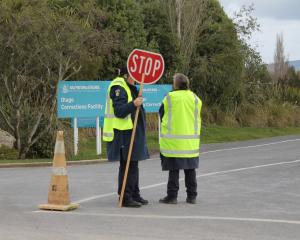
The increase of 50 students will be allocated across the two medical schools in Dunedin and Auckland in a funding boost which will lift domestic enrolments to 589 places a year.
While it does not go as far as some in the sector have been urging, it will be welcomed by university leaders and medical associations who have been seeking a lift in funded enrolments for several years. The intake was last raised in 2015, by 35 places.
Health Minister Ayesha Verrall will announce the funding boost at a speech at the University of Auckland today. The initiative will cost an estimated $23 million a year over 10 years.
Dr Verrall said the Government wanted to train and retain as many local health workers as possible.
“We have always been reliant on overseas-trained doctors, and we recognise the skills and knowledge the international workforce brings to our workforce,” she said.
“However, to address inequities in the system and build a sustainable workforce, we must grow and invest in our domestic doctors, especially when there is global competition for internationally trained doctors.”
Nearly half of New Zealand’s medical workforce graduated overseas. While foreign-trained doctors are highly valued here, they are also more likely to leave again after a few years and are not considered a long-term solution to shortages.
Locally trained doctors are more likely to remain in New Zealand permanently and are considered important for addressing this country’s cultural needs.
New Zealand produces relatively few domestic graduates. Australia, with a population five times larger than New Zealand, trains seven times as many medical students.
The Government targeted foreign recruitment in the last two years by changing immigration settings and offering fast-tracked citizenship to health workers.
However, the recruitment campaigns have had modest results and faced stiff competition from other countries also facing chronic shortages.
The increase of 50 medical school places will not be enough on its own to stem shortages. The Residents Doctors Association estimated that New Zealand urgently needed 300 extra medical graduates a year to keep up with a growing, ageing population and replace retiring doctors.
But there were limits to how fast medical schools could increase their intake, the Government has said. In particular, hospitals and GP clinics’ capacity to supervise students in the later years of their degree was currently very limited.
It is not yet known how this pressure point will be addressed with the larger medical school intake.
Doctor shortages are being felt in all sectors, but especially in general practice. The average GP age is 53 and a Royal NZ College of GPs survey in 2020 found around half of GPs were planning on retiring over the next decade.
Roughly 25 per cent of medical graduates each year go into general practice, a rate which will not address the worsening shortage.
There has been occasional discussion of a third medical school in New Zealand - an idea which the National Party says it will explore if in power.
The University of Waikato and Waikato DHB made a joint bid in 2016 for a new medical school with an initial intake of 120 students, but the proposal was shut down in 2018 by the Labour-led government.













